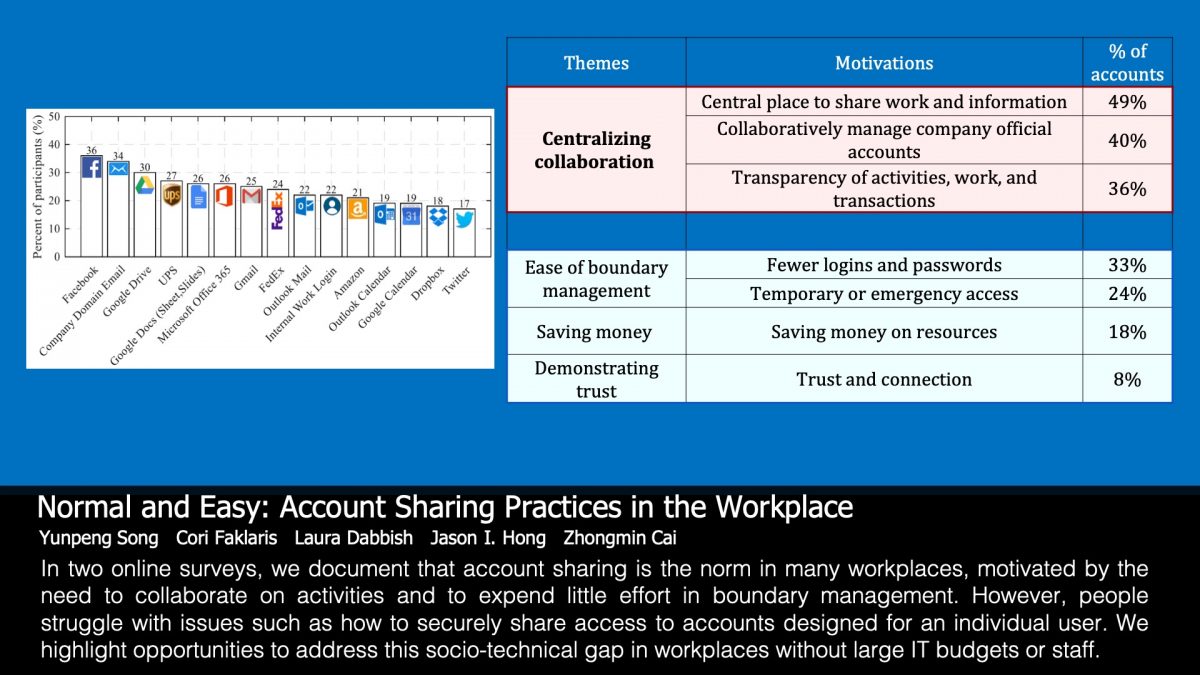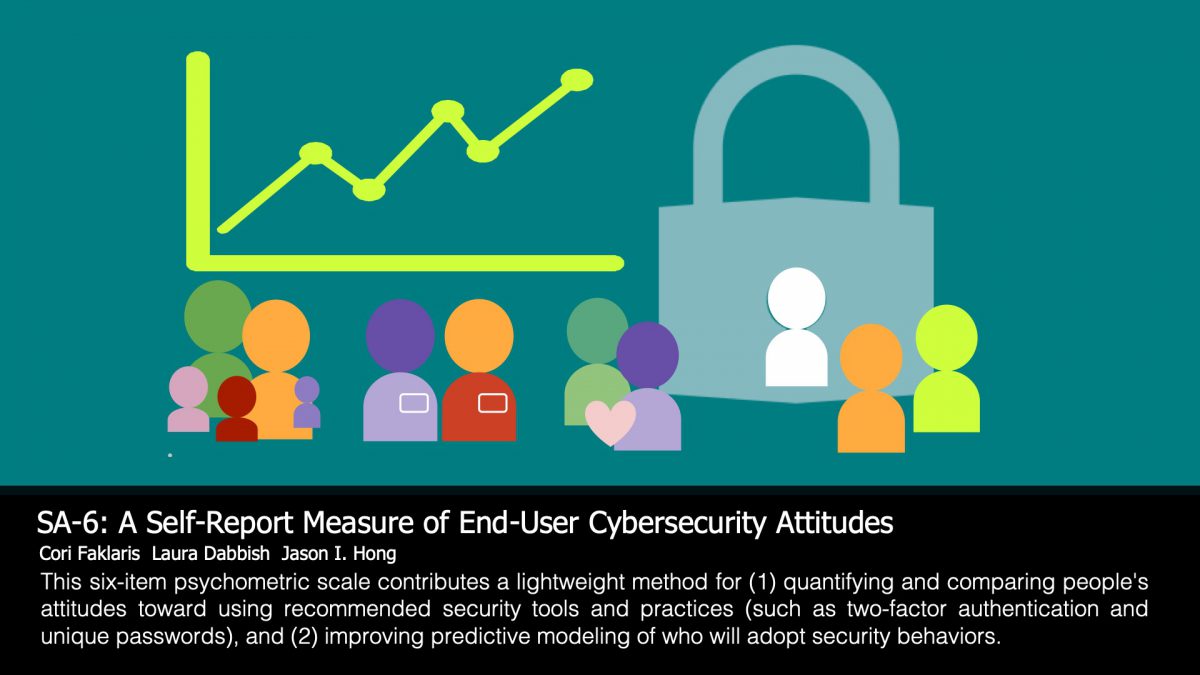Drumroll … I now am a co-author on an archival publication in the lead venue for social computing!
Our paper, “Normal and Easy : Account Sharing Practices in the Workplace,” is being published this month in Proceedings of the ACM on Human-Computer Interaction, Vol. 3, CSCW. This is part of the Conference on Computer-Supported Collaborative Work and Social Computing – which is what most of my life’s work in information technology and media has revolved around.
However, as much as I might want to be present, I am also practicing good self-care this fall – and part of that is limiting my travel so that I don’t run myself ragged trying to be different places plus keep up with my research and personal life! So, my advisor Laura Dabbish is presenting this research on Wed., Nov. 13, in Austin, Tx., USA.
For this research paper, we conducted two online surveys. In Study 1, we asked people a series of open-ended questions to elicit their sharing practices and start to zero in on what are their key pain points, while in Study 2, we collected a series of closed-ended items to gather specific details about how and why people shared digital accounts with colleagues and what are their specific struggles with those activities. We have posted these survey protocols on our website at https://socialcybersecurity.org/files/WorkplaceSharing_OpenEndedShort_Qualtrics.pdf and https://socialcybersecurity.org/files/WorkplaceSharing_ClosedEndedLong_Qualtrics.pdf.
Our results demonstrate that account sharing in the modern workplace serves as a norm rather than a simple workaround (“normal and easy”), with the key motivations being to centralize collaborative activity and to reduce the work needed to manage the boundaries around these collaborative activities.
However, people still struggle with a number of issues: lack of activity accountability and awareness, conflicts over simultaneous access, difficulties controlling access, and collaborative password use. (Hands up, anyone who has a sticky note taped in their work space to share passwords for key accounts?)
Our work provides insights into the current difficulties people face in workplace collaboration with online account sharing, as a result of inappropriate designs that still assume a single-user model for accounts. We highlight opportunities for CSCW and HCI researchers and designers to better support sharing by multiple people in a more usable and secure way.
This is a BIG paper, so I’ll stop restating the abstract and send you to the link on our website:
- Yunpeng Song, Cori Faklaris, Zhongmin Cai, Jason I. Hong, and Laura Dabbish. 2019. Normal and Easy: Account Sharing Practices in the Workplace. In Proceedings of the ACM: Human-Computer Interaction, Vol. 3, Issue CSCW, November 2019. ACM, New York, NY, USA. Available at: https://socialcybersecurity.org/files/CSCW2019_NormalAndEasy.pdf


